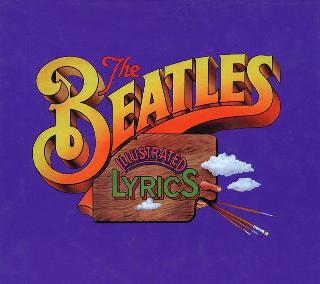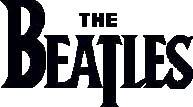Index
Home
Vorige
Penny Lane
Composer(s) : Lennon and McCartney
Year : 1967
Chords/Tabs: Penny Lane
Notes on "Penny Lane" (PL)
KEY B Major
METER 4/4
FORM Verse -> Verse -> Refrain ->
Verse -> Verse (Solo) -> Refrain ->
Verse -> Verse -> Refrain -> Refrain/Outro (w/complete ending)
GENERAL POINTS OF INTEREST
Style and Form
- On a bad day, Paul's keen interest in trying out diverse musical styles
could produce a kind of undigested whole-cloth parody that you either
have to love or simply cannot stand; e.g.
"Honey Pie" or
"Maxwell's Silver Hammer."
On a good day, though, he could demonstrate an extraordinary
talent for melding several such styles so that the whole becomes something
not just "greater than," but somehow Different From and Elevated Above,
the mere sum of its parts. And "Penny Lane", IMHO, was the product of
a very good day.
- It's more "classical" than
"Got to Get You into my Life" but maybe less
so than
"For No One;"
more "popular"/"hard rocking" than
"Eleanor Rigby"
but maybe less so than
"Good Day Sunshine."
Go and figure; I defy you to easily classify it!
- The completely cyclical form is rather folk-like, though the transposition
upward of the final refrain is quite reminiscent of the late 50s/early 60s
cliche of stepping up a half-step for the last chorus. The Beatles only
other use of this latter gambit, to this point of their career, is found
as far back as
"And I Love Her."
(... and, gee, which one of them wrote that one ? :-))
- The rhythmic pulse is march-like with an undercurrent of fast triplets
and localized syncopations that emphasize, rather than challenge,
the rigidity of the four-in-the-bar meter.
Melody and Harmony
- The melody and harmony are both extraordinarily flexible in a quiet,
subtle sort of way. The overall modality of the song is clearly Major,
yet the verse has a deft touch of the parallel minor key, and the refrain
is modally inflected by the melodic flat 7th.
- The setting of the refrain in the key of flat-VII, though, is the
single most unusual feature -
- again, I challenge you, this time,
to find another example of it from anywhere! And structurally, it
provides ironic motivation for the upward transposition of the final
refrain. The refrain is musically set off from the verse not
only by this harmonic gambit, but by the additional technique of its
being placed on melodically higher ground than the verse.
Arrangement
- The mix is has a wall-of-sound thickness that is surprisingly more
reminiscent of the Beach Boys' _Pet Sounds_" aesthetic than it is of
Phil Spector; though thankfully, you'll have a much harder time here
detecting the splices in the tape than you do in plotting the progress
of "Wouldn't It Be Nice." :-) Yes, there are brass, flutes, a piccolo,
a bass fiddle, a fire bell, and voices mimicing sirens that you can hear.
There are also oboes (not to mention ovedubbed keyboard parts) that you
*cannot* hear!! At least, I cannot.
- The final track also shows some of the tell-tale signs of having
been recorded with the tape running slow, in order to sound faster
(not to mention "higher") on playback; the most noticeable to my
ears being the unnaturally fast vibrato in Paul's voice.
- The refrains feature an effect somewhere between true counterpoint
and antiphonal obligato in the way that the the thread of the lead vocal
is picked up by either the backing vocals or trumpet solo.
- The appearance of a so-called "Bach," (i.e. Baroque-era piccolo)
trumpet in this Beatles song is both uncanny and out of character;
to the extent that any similarity between the licks played here and
the solo part of a certain _Brandenburg Concerto_, said by Macca to
have inspired him ,is (maybe by intention) both remote and ironic.
Yes, it's obviously a period instrument, but casting himself against
type for a change, Mr. Martin coaxes out a solo that is not quite so
classical evocative as the ones he had come up with for such occasions
as "In My Life" or
"For No 0ne."
- Certainly, the layering of this solo is strictly according to the
Beatles book of style -
- see
"For No 0ne."
for another example: first
off, save the strange instrument for a rhtyhmically unbound solo section
in the middle, to be followed by more subtle appearances as a single note
in the first of the next pair of verses, and a slow-paced obligato in
the penultimate refrain; finally capped off an another unbound lick
(a nice reprise of the solo) in the final section.
SECTION-BY-SECTION WALKTHROUGH
Verse
- The finished track has no formal "intro" to speak of, though, while
Paulie comes in on "3-AND," there is a one-eighth-note's trace of the
backing track starting right on "THREE," which suggests the possibility
of a more extensive intro in the studio that was deftly masked off;
you see, outtakes potentially solve riddles just such as these, *when*
we can get our hands on them!
- The verse is a standard eight measures long and parses into an
AA'B (2+2+4) structure.
- The same stylistic blend that is so well manifested in the overall
production shows up as well within the musical fabric. This verse
section starts off with a classically predictable walking bass
cliche, but with a single surprisingly minor 7th chord on I in
measure three, the section continues onward in a Jazzy/French
Impressionistic vein for several measures only to cadence
with, again, a classically inspired 4->3 progression:
Bassline:|B A# G# F# |E C# F# F#8 |
B: |B |E c# F# |
I IV ii V
|B A# G# F# |B |
|B |b7 |
I ********************************
|g# |G |
********************************flat-VI
|F# |- |
V4 - - - - - 3
- The harmony of those measures I've highlighted above with a string
of asterisks is extremely chromatic. We've seen many cases along the
way where "analysis by roman numeral" breaks down and you can only
understand a certain progression as a matter of persuasive voice
leading. This particular example goes one step further in that
the underlying chromatic progression is itself embellished and
stretched out.
Look at it this way -- The overall progression is from I -> V
by way of flat-VI chord, which is borrowed from the parallel minor.
Here is the *unembellished-yet-chromatic* progression; transposed
up to C to make it easier reading (please pardon my unsolved
parallel octaves and fifths):
C - B
G Ab G
E Eb D
C Ab G
I flat-VI V
And here is the embellished progression. By lining them up one
under the other I think it becomes easier to see how the
voices of the texture move out of synch, blurring or blunting
the otherwise clear overall thrust of the progression:
C Bb C - - B
G - - Ab G
E Eb - - D
C - A Ab G
I V
4 -> 3
- The implicit shift to the parallel minor, and the continued harping
on it by the keyboard part lends an ominous tone to the song, one that
is curiously at cross-currents with the otherwise sunny lyrics.
- The first verse of each pair has the 4->3 suspension over the F#
chord repeated in its last two measures. The second verse of each
pair, the ones that are followed by a refrain, use the final two
measures to make an unusual pivot to the key of the flat-VII, A Major:
|F# |E |
V4 - 3
A:VI#3 V
In this case, the F# chord is not indigenous to A Major, though
the f# minor chord *is*.
Refrain
- The refrain is eight measures long, in a standard AA' (4 + 4)
form, and features much simpler harmony than the verse:
A: |A |- |D |- |
I IV
|A |- |D |F# |
I IV
B: III V
- The harmonic pivot back to the home key of the verses is based on
the borrowing of a chord from the parallel minor. In this case,
the D Major chord is indigenous to b *minor*, not Major.
- Measures 2 and 6 of this section feature the I chord in its so-called
"first" (or 6/3) inversion. In the realm of classical music, this
6/3 chord is an ordinary staple of the dialect. In terms of the
Beatles songs we've studied to date, it's appearance is sufficiently
rare to merit comment.
Outro
- The "rare" alternate mix of this song with the one last trumpet lick
at the very end proves that the less-is-more aesthetic of the official
mix *without* the trumpet is to be preferred.
- The complete ending here kind of hits a wall and then ricochets.
Paul's last "Penny Lane" vocal lick is executed in hard syncopation
against the final downbeat, and is followed by a suspenseful few
seconds before the cymbal crescendo finishes up for good.
SOME FINAL THOUGHTS
- "Penny Lane" is dominated, both in music and words, by a type of
blue-skied charm that nicely sets a foil for the
"SFF" flip-side of
the single, but in terms of "Penny Lane" per se, could easily over-do
if not undo itself entirely. There are, however, counter-balancing
forces of what I might describe as "ambiguity" at work which help to
pull it off successfully.
- The music for example, contains scattered flecks of the ominous in
both the harmony (which we've already discussed) as well as the
arrangement; my favorite example of which is the sustained low note
on the bass fiddle in the penultimate verse. This bittersweet
undercurrent is left unexplained and effectively cuts what could
otherwise leave an excessively sweet after taste.
- The words, even more so, are put together in a way that elevates
them above the superfical clip-art/cutsey quality of much of their
imagery. You can see this from a comparison of "Penny Lane" with
"Eleanor Rigby"
Both songs open up with disparate, contrasting
story elements. But, whereas in the earlier song, effective irony
is conjured by Paul's going out of his way to interlock the two stories
at the end, in "Penny Lane" he allows whatever correspondences develop
among the many more then two story elements (barber, banker, fireman,
pretty nurse, and The Rain, for starters) to appear as random and
coincidental.
- Indeed, the whole panorama is described in terms so non-judgemental
and matter of fact, that the ultimate effect is quite transcendent.
No matter how much more realistic "Penny Lane" is in language and
imagery, compared to
"Strawberry Fields Forever," you might say
the two songs share this impressionistic, entirely subjective point
of view.
Regards,
Alan (awp@bitstream.com *OR* uunet!huxley!awp)
---
"Doubleback alley takes me back, and in my mind I see,
Happy smiling faces, if I flog my memory." 072395#104
---
Copyright (c) 1995 by Alan W. Pollack
All Rights Reserved
This article may be reproduced, retransmitted, redistributed and
otherwise propagated at will, provided that this notice remains
intact and in place.
Ook op Magical Mystery Tour:
Ook op 1967-1970:
Ook op 1:
(c) 2024 Serge Girard


 (c) Alan Aldrigde, The Beatles Illustrated Lyrics
(c) Alan Aldrigde, The Beatles Illustrated Lyrics